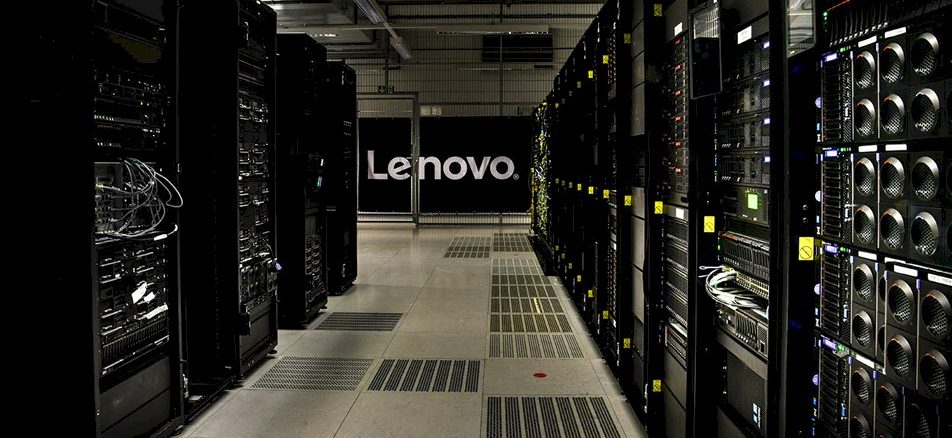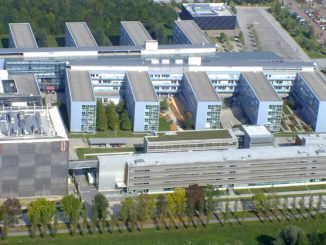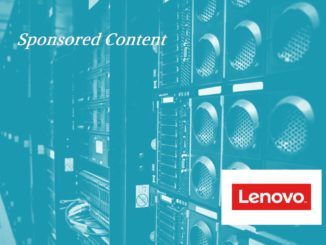
The democratization of any effective technology happens automatically by virtue of its success, even if the complexity it presents initially overwhelms some of the smartest people who wield it. But after six decades of commercial computing in the datacenter, we have certainly learned a thing or two about helping this process of adoption and integration along.
There’s nothing intrinsically special about artificial intelligence (AI) in this regard, which is arguably just the latest evolution in a long line of sophisticated data processing tools.
Mainframes were kept in glasshouses as a kind of temple of computing during the 1960s and 1970s before being mimicked and copied into minicomputers. Eventually, PCs spawned two seismic shifts: becoming powerful enough to be servers and run mission-critical workloads in a client-server environment. They made constant access to data ubiquitous to the masses, which ultimately led to the smartphone at one extremity of condensed processing power and the hyperscale data center on the other.
A parallel evolution happened with the relational database from the 1980s. The original could be asked questions in a fairly straightforward Structured Query Language (SQL) and show connections and relations across transactional data. Its successor culminated into data warehouses crammed with historical data from which nuggets of insight were mined, before exploding with the addition of unstructured data into Hadoop and Spark and a myriad of other data analytics platforms.
The Inevitable AI Revolution
The AI revolution of the past decade was inevitable given the volume and availability of information on which to train statistical machine learning algorithms, coupled with the ever-increasing amount of data that needed to be culled for insight, and the emergence of a relatively inexpensive and powerful parallel processing GPU engine. The convolutional neural network models on which machine learning is based have been around since the 1980s, but there was neither enough training data or computing power for these models to converge and deliver the accuracy we see today.
It’s just as certain that AI techniques will now be woven into all kinds of applications and computing use cases spanning government agencies, academic institutions and corporations. And eventually, every organization is likely to acquire the data processing and storage technologies to explore their own AI workloads and encapsulate operations in the application code that they have either created or purchased.
This computerization of functions has already transformed back-office accounting applications into suites of enterprise resource planning (ERP), customer relationship management (CRM), and supply chain management (SCM) software. That shift will accelerate with an injection of AI that will use advanced statistical techniques and neural networks to improve efficiencies and, like other technologies that predate AI, do new things that were not possible before.
If this is done properly, AI will come within reach of every organization and extend beyond the realm of hyperscalers and cloud builders which have historically had the most compute and storage resources at their disposal. And unlike traditional HPC simulation and modeling, which has also been democratized over the last few decades, AI is a technology that can be applied to all industries and company sizes.
Simplifying The Complex
Democratizing AI involves making the technology simpler. This is the tricky bit, because unlike prior data processing and analytics techniques, AI is based on the black-box, non-deterministic processing of a neural network, a collection of statistical models from which sets of data can be converted to other forms or identified or analyzed in some fashion. It’s a difficult technology to master, just like HPC simulation and modeling were before it. Yet HPC is now within the technical and economic grasp of any organization that wants to use it, and AI is likely to follow.
“The majority of the data scientists and AI engineers are really familiar with the Windows or Ubuntu environments, and they mostly work from laptops, PCs, or workstations,” explains Valerio Rizzo, EMEA Head of AI at Lenovo, already one of the world’s biggest suppliers of HPC systems and now a leader in the emerging AI systems market.”
“The data scientist unicorn that everyone is looking for is a professional who has deep expertise in mathematics and statistics, capable of programming in several languages, can use any kind of tool or framework in the market, IT technology savvy, and has a business mindset,” he added. “But the reality is that today there is a shortage of this kind of very broad and deep expertise, and when found, it is expensive.”
Several years ago, Lenovo developed Software Antilles for simplifying HPC infrastructure management and job scheduling. It has since evolved into the Lenovo Intelligence Computing Orchestrator, or LiCO for short, which now spans both HPC and AI workloads. And specifically, according to Rizzo, serves the intersection of HPC and AI.
“Most AI users are not familiar with the traditional HPC software stack, and so with LiCO, we can enable them to use HPC-style infrastructure to support AI training applications without them needing to learn that HPC stack and go through a steep learning curve,” he explained.
“They set up their Python environment and their Jupyter notebooks, all of their libraries, and we abstract that HPC software stack in such a way that it is no more difficult for data scientists to use than PyTorch or Anaconda, which they are familiar with.”
LiCO And HPC Combine
In essence, LiCO enables data scientists to train AI models, and use an HPC cluster without them needing to operate and manage and connect each HPC software stack component. But equally importantly, says Rizzo, the LiCO stack helps in keeping the GPU-accelerated servers in the cluster busy so that the capital investment in these AI systems – like HPC system before them – is maximized.
Lenovo subsidiary Motorola Mobility is already using LiCO to run the AI training needed to perform AI-assisted zoom functions on its smartphone cameras. This is hardly a traditional HPC use case, but there will be many LiCO users who are not interested in HPC simulation and modeling, but which nonetheless want to create scalable AI training clusters using HPC technologies.
Others, predicts Rizzo, will come at AI from the Kubernetes container and microservices angle. As such they will want a management tool that can interface with Kubernetes, so Lenovo has created a version of LiCO that interacts with the container management platform itself.
“The HPC version of LiCO is bound to Lenovo systems because it has special capabilities given to it by our hardware and software stack – such as deep monitoring that allows us to make efficient use of cluster resources,” explains Rizzo. “The Kubernetes version is pretty much hardware agnostic.”
For traditional HPC customers in, say, the oil and gas, automotive, or financial services industries, LiCO can be laid on top of the existing HPC infrastructure with GPU acceleration and made accessible to new AI users who want to do training runs on HPC systems.
The fact is, being able to do AI training at scale almost continuously is the first step in embedding AI into all sorts of different applications. And the many companies which have recently created hundreds to thousands of applications with the intention of adding AI algorithms to them in the future will need to do that AI training themselves and figure out how to augment the capabilities of their applications with machine learning.
Driven by independent software vendors around the world, several workloads have emerged as early pioneers in the AI revolution. In the electronics industry, robotic process automation (RPA) is transforming manufacturing to deliver a much higher level of precision and faster manufacturing times than those associated with human employees. AI is also being used with computer vision algorithms to do quality control inspection on manufactured goods in production environments. In financial services, AI is embedded into fraud detection to do a better job at spotting fraud without giving too many false positives. And in retail, AI-assisted video surveillance is being used for several types of loss prevention, as well as to enhance the customer experience.
Many of these applications are already coming to market through Lenovo’s AI Solutions Accelerator Program. And when they do, the independent software vendors will use Lenovo tools and platforms to perform AI training and support their application workload, while the customers will just buy the AI-powered applications and enjoy the benefits of implementing it into their business. That’s the true democratization of AI in action.
Sponsored by Lenovo.





Be the first to comment